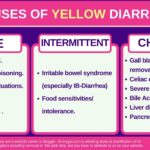MiraLax Poop Chart: How to Check for the Laxative Response.
Our content is not intended nor recommended as a substitute for medical advice by your doctor. Use for informational purposes only.
What is the Bristol stool chart for MiraLAX?
To describe stool objectively, Scientists have developed a scale for stool form.
The poop chart is called Bristol Stool Form Scale (BSFS) or Meyer’s scale.
You can use the scale to check for the need and the response to MiraLAX laxative.
The Bristol Stool Form Scale (BSFS) reflects the time it takes for food to pass through your intestine. The more time your poop takes, the harder it becomes.
Type one BSFS refers to the most severe form of constipation, while type seven refers to the most severe form of diarrhea.
Type 1 BSFS (constipation):
Type 1 BSFS is the most extreme form of constipation. Type one BSFS is separate hard lumps. They resemble nuts and are hard to pass.
Type 2 BSFS (constipation):
Sausage shape but lumpy (non-separable lumps). Type one and two BSFS represent constipation.
Type 3 BSFS (normal):
Sausage-shaped, with cracks on its surface (surface is not lumpy).
Type 4 BSFS (normal):
Sausage or snake-like poop. No lumps or cracks (smooth and soft surface). Type three and four are considered normal stools (Poop).
Type 5 BSFS (diarrhea):
Soft blobs with clear-cut edges. The poos are easy to pass.
Type 6 BSFS (diarrhea):
Fluffy pieces with ragged edges. The poop is mushy and easy to pass.
Type 7 BSFS (diarrhea):
Watery without any solid pieces (watery diarrhea).
Using BSFS as a MiraLAX poop chart:
You can use the Bristol Stool Form Scale (BSFS):
- First, to decide whether you need to take MiraLAX or not.
- Second, to check for the response to MiraLAX.
How to check for the response to MiraLAX using the poop chart?
After taking MiraLAX for constipation. One of the below scenarios could happen:
- No response: type 1 and 2 BSFS persistence after taking MiraLAX indicates non-response.
The non-response indicates that you need to increase the dose or another laxative.
Related: Can you take MiraLAX 3 times a day? - Good response: happens if your poop turns into type 3 or 4 BSFS. However, please don’t take MiraLAX for more than one week without the consultation of your doctor.
- Over-response: MiraLAX can cause diarrhea (type 5,5 or 7 BSFS). The over-response to MiraLAX is due to either over-dose or over-response of your colon to the laxative.
The over-response indicates that you need to either decrease or stop MiraLAX.
More: Miralax side effects in older people.
When to take MirLAX (according to the stool chart)?
MirLAX is an OTC laxative for OCCASIONAL constipation. We define occasional constipation as:
- Infrequent bowel movements (occasional).
- Difficult to pass stool.
- The straining during bowel movements.
- The feeling of incomplete evacuation.
Also, your doctor may prescribe MiraLAX for chronic idiopathic constipation. According to Rome IV criteria, chronic (functional) constipation is defined as the presence of two or more of the following (reference):
- Straining during more than 25% of defecations.
- BSFS type one and two in more than 25% of defecations.
- A sense of anorectal blockage in more than 25% of defecations.
- Fewer than three spontaneous bowel movements per week.
- Manual maneuvers to facilitate the passage of your poop in more than 25% of defecations.
Type one and two BSFS on the chart are among the indications of MiraLAX. However, the MiraLAX poop chart is only part of the story.
The frequency of your bowel movements, straining, and manual maneuvers are also indications. For example, your doctor may prescribe Miralax because you have fewer than three bowel movements a week, regardless of the poop chart.
More: How much MiraLAX can you take for severe constipation?
- Evidence-based
- Written by a doctor.







